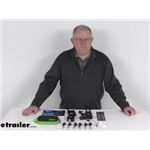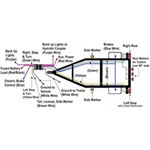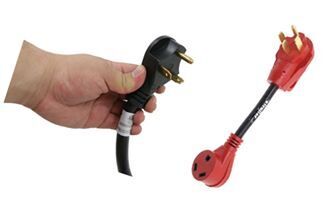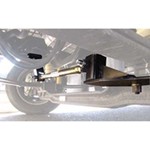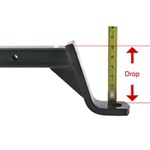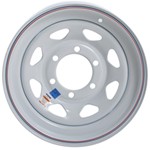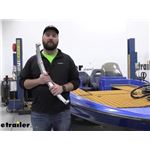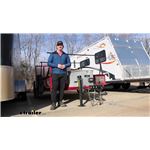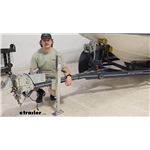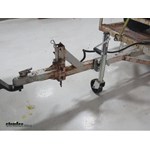TPMS Sensor - Boat Trailer
Filter by Number of Sensors
-
2 Sensors

$97.99 - $284.00
4 Sensors
$244.39 - $523.68
6 Sensors
$328.95 - $663.00
8 Sensors
$557.00 - $828.00
10 Sensors
$459.59 - $743.27
 Filters
Filters
on TPMS Sensor
Videos
for TPMS Sensor
Help Articles
for TPMS Sensor
Expert Answers
for TPMS Sensor
Not sure what TST TPMS you're looking at but the best way to prevent stem failure is to be sure to use the proper air pressure in the tire. A system like the TST TPMS for RVs item #TST-507-RV-4-C can be used on rubber, steel, chrome, or nickel…
view full answer...Hey Bryan, thanks for reaching out. Yes, the TST TPMS kit #TST-507-INT-6-C will work with 22.5 inch wheels. This system uses internal sensors that mount inside the tire using stainless steel straps, and each strap is 4 feet long. That provides plenty…
view full answer...According to my contact at TST, going with the internal sensor would have the following benefits: • Battery Life. The internal sensors can be expected to last 5+ years, versus about 1 to 1-1/2 years for the external. • Protection: By virtue of the…
view full answer...Hey Greg. Since your 2019 Pace Arrow LXE 38K is a class A motorhome with a diesel engine, TireMinder says you need to mount the repeater, included with item #TM98FR, as close to the rear axle as possible. Their website specifically states to avoid…
view full answer...Hey Max, the battery life of the sensors that come with the TST TPMS #TST34FR is 1 year to 1.5 years.
view full answer...Hey Robert, thanks for reaching out! Since your Sprinter has aluminum wheels it wouldn't be a good idea to use a kit like the TST TPMS #TST34FR that uses the stainless steel bands as that would eventually cause galvanic corrosion. For your…
view full answer...We have two really great options for monitoring 10 motorhome and trailer tire pressures with the part #TM56FR which comes with its own monitor or the #TM79FR which syncs to your smart phone and displays the pressures of all tires on your phone screen…
view full answer...Hi Christian! We have replacement sensors in one, two, and four packs, which I have linked below. I would grab a two pack and a four pack as it will be the most economical way to go. Brass Tire Sensors for TST TPMS - Qty 1 #TST47FR Brass Tire Sensors…
view full answer...Hey Scott, yes the Portable Power Watchdog Surge Protector #HU62VR that you referenced is the current version that will work with your Newmar.
view full answer...The TST TPMS, #TST34FR has a rather conservative battery life listing of 12 to 18 months with feedback indicating greater real world usage lifespan. But yes, when it is time to replace the battery, you will of course need to remove the tire.
view full answer...That is an interesting question, so I reached out to the manufacturer, TST, who said yes, you can use the flow-through sensors with the internal sensors. The reason why is that each sensor - the internal and flow-through - has a unique 6 digit code…
view full answer...Hey Gregg! I'm not sure where that 2 to 4 weeks came from but I wouldn't want to change out the battery that often either. The sensors that come with the TireMinder A1AS TPMS #TM79FR do have a battery life of 9 to 14 months, we have confirmed…
view full answer...
on TPMS Sensor
Videos
for TPMS Sensor
Help Articles
for TPMS Sensor
Expert Answers
for TPMS Sensor
Not sure what TST TPMS you're looking at but the best way to prevent stem failure is to be sure to use the proper air pressure in the tire. A system like the TST TPMS for RVs item #TST-507-RV-4-C can be used on rubber, steel, chrome, or nickel…
view full answer...Hey Bryan, thanks for reaching out. Yes, the TST TPMS kit #TST-507-INT-6-C will work with 22.5 inch wheels. This system uses internal sensors that mount inside the tire using stainless steel straps, and each strap is 4 feet long. That provides plenty…
view full answer...According to my contact at TST, going with the internal sensor would have the following benefits: • Battery Life. The internal sensors can be expected to last 5+ years, versus about 1 to 1-1/2 years for the external. • Protection: By virtue of the…
view full answer...Hey Greg. Since your 2019 Pace Arrow LXE 38K is a class A motorhome with a diesel engine, TireMinder says you need to mount the repeater, included with item #TM98FR, as close to the rear axle as possible. Their website specifically states to avoid…
view full answer...Hey Max, the battery life of the sensors that come with the TST TPMS #TST34FR is 1 year to 1.5 years.
view full answer...Hey Robert, thanks for reaching out! Since your Sprinter has aluminum wheels it wouldn't be a good idea to use a kit like the TST TPMS #TST34FR that uses the stainless steel bands as that would eventually cause galvanic corrosion. For your…
view full answer...We have two really great options for monitoring 10 motorhome and trailer tire pressures with the part #TM56FR which comes with its own monitor or the #TM79FR which syncs to your smart phone and displays the pressures of all tires on your phone screen…
view full answer...Hi Christian! We have replacement sensors in one, two, and four packs, which I have linked below. I would grab a two pack and a four pack as it will be the most economical way to go. Brass Tire Sensors for TST TPMS - Qty 1 #TST47FR Brass Tire Sensors…
view full answer...Hey Scott, yes the Portable Power Watchdog Surge Protector #HU62VR that you referenced is the current version that will work with your Newmar.
view full answer...The TST TPMS, #TST34FR has a rather conservative battery life listing of 12 to 18 months with feedback indicating greater real world usage lifespan. But yes, when it is time to replace the battery, you will of course need to remove the tire.
view full answer...That is an interesting question, so I reached out to the manufacturer, TST, who said yes, you can use the flow-through sensors with the internal sensors. The reason why is that each sensor - the internal and flow-through - has a unique 6 digit code…
view full answer...Hey Gregg! I'm not sure where that 2 to 4 weeks came from but I wouldn't want to change out the battery that often either. The sensors that come with the TireMinder A1AS TPMS #TM79FR do have a battery life of 9 to 14 months, we have confirmed…
view full answer...Filters
- 27 results
Filter Results
-
 2 Sensors
2 Sensors
$97.99 - $284.00
-
 4 Sensors
4 Sensors
$244.39 - $523.68
-
 6 Sensors
6 Sensors
$328.95 - $663.00
-
 8 Sensors
8 Sensors
$557.00 - $828.00
-
 10 Sensors
10 Sensors
$459.59 - $743.27
TPMS Sensor Parts or Accessories












